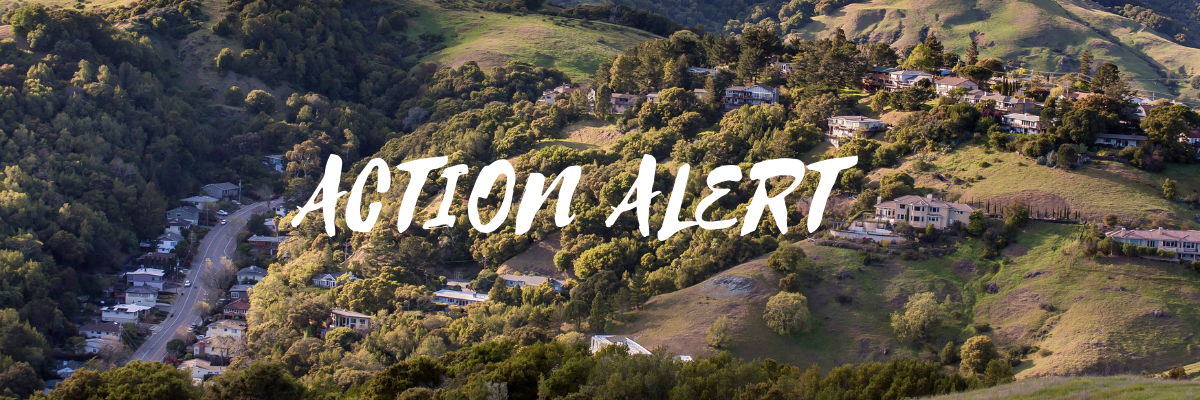This is Not a Numbers Game!
Housing is a balance of people and place. Please attend the County's West-Marin focused online meeting Wednesday, February 16th at 6pm to learn more about where the County is proposing to create housing and how you can participate.
It's important for residents to provide the County with feedback to ensure that residential development is balanced to protect our waters, open space, and agricultural lands, as well as being in alignment with local and regional Climate Action Plans.
Why This Matters
The Housing Element will be incorporated into the Countywide Plan. The Countywide Plan is the vision document that guides the future development. The development locations the County is considering are not in alignment with our communities' values and fail to take into account constraints such as the availability of developable land, environmental protections, or infrastructure needs.
Unfortunately, the housing requirements right now are only focused on the numbers and building more, rather than reviewing the actual barriers to sustainable development and affordable housing.
Feedback the County Needs to Hear!
1. Stop focusing on just the numbers!
The online Balancing Act tool incorrectly places the focus on the numbers and
forces the public to select sites that the County consultants identified that in many cases are inappropriate.
2. Do not propose development sites that are in or near sensitive habitat areas,
hazardous areas, and areas that will be impacted by climate change (rising sea levels and wildfire, to name a few).
3. Do not propose sprawling development sites in rural areas away from appropriate infrastructure, transportation, and public services. This will increase vehicle miles traveled, moving us away from climate goals.
4. Ensure new housing will be for people to live in and not converted to vacation rentals. Housing must be for the people who need it most in our communities and not create additional displacement.
5. Protect agricultural lands.
It's unacceptable to rezone A-60 parcels to build urban sprawl housing.
6. Consider the meaningful input of environmental and housing advocates
who worked, in the past, to tirelessly identify appropriate development sites, connect past planning efforts of the Countywide Plan goals and visions, and develop the recently adopted Climate Action Plan.
7. Create pathways for broad and equitable public outreach.
Online meetings do not provide the public with meaningful input and understanding of the proposed development sites. The County should come out into the community in-person to identify potential locations appropriate for development. Each coastal village is unique and has specific needs for housing, protection of rural community character, and unique environmental resources.
Background Information
Since 1969, California has required that all local governments (cities and counties) adequately plan to meet the housing needs of everyone in the community. California’s local governments meet this requirement by adopting housing plans as part of their “General Plan” (also required by the state). General Plans serve as the local government’s "blueprint" for how the city and/or county will grow and develop.
Every 8 years, the State releases the Regional Housing Needs Allocation or RHNA that is what determines the total number of new homes that need to built—and how affordable those homes need to be—in order to meet the housing needs of people at all income levels. The RHNA cycle for 2023-2031 requires that that the cities, towns, and unincorporated Marin make plans for more than 14,000 units of new housing. Unincorporated Marin alone must plan for more than 3,500 new homes.
The County of Marin has prepared online materials for residents to review and provide comments on. In this process, the County has identified draft potential inventory locations—areas that could potentially be zoned for new housing development—and released those to the public for review. There are several online tools that the public can review to better understand the potential building locations.
TIMELINE
The County will need to submit an updated Housing Element chapter to the State of California by January 2023 that includes a plan of how they will meet the State's requirement for new housing and analysis of the potential housing locations.
According to prior public workshops, the County is engaging in a scoping and drafting period now through the early spring. Draft documents will be created for public review in the spring and summer. Drafts will be presented to the County Planning Commission for recommendations and changes. The Final Housing Element update will be presented to the Board of Supervisors in December 2022 for approval.
COMPLEXITY OF THE ISSUE
Obviously this is a complex issue, as we do have a housing shortage in the Bay Area and in the County of Marin. There is a need for additional housing to be developed; but the process should be broad, inclusive, and consider the efforts in our past Countywide Plan updates and climate planning that have sought to find a way to balance people, place, and the climate crisis.
Check out the Draft Sites Inventory Map to see where the County thinks housing can be constructed: https://bit.ly/3rsFZpP
More Information about the County's Housing & Safety Element Updates
EAC will be attending the February 16th meeting, following these proposals closely, and engaging with other organizations to ensure a robust public process to protect our open space, public lands, environmental corridors, and agricultural lands (A60 zoning) from development. Due to the work of EAC and other advocates, A60 zoning restricts the subdivision of agricultural land to 60 aces per parcel, preventing sprawl on agricultural lands.



